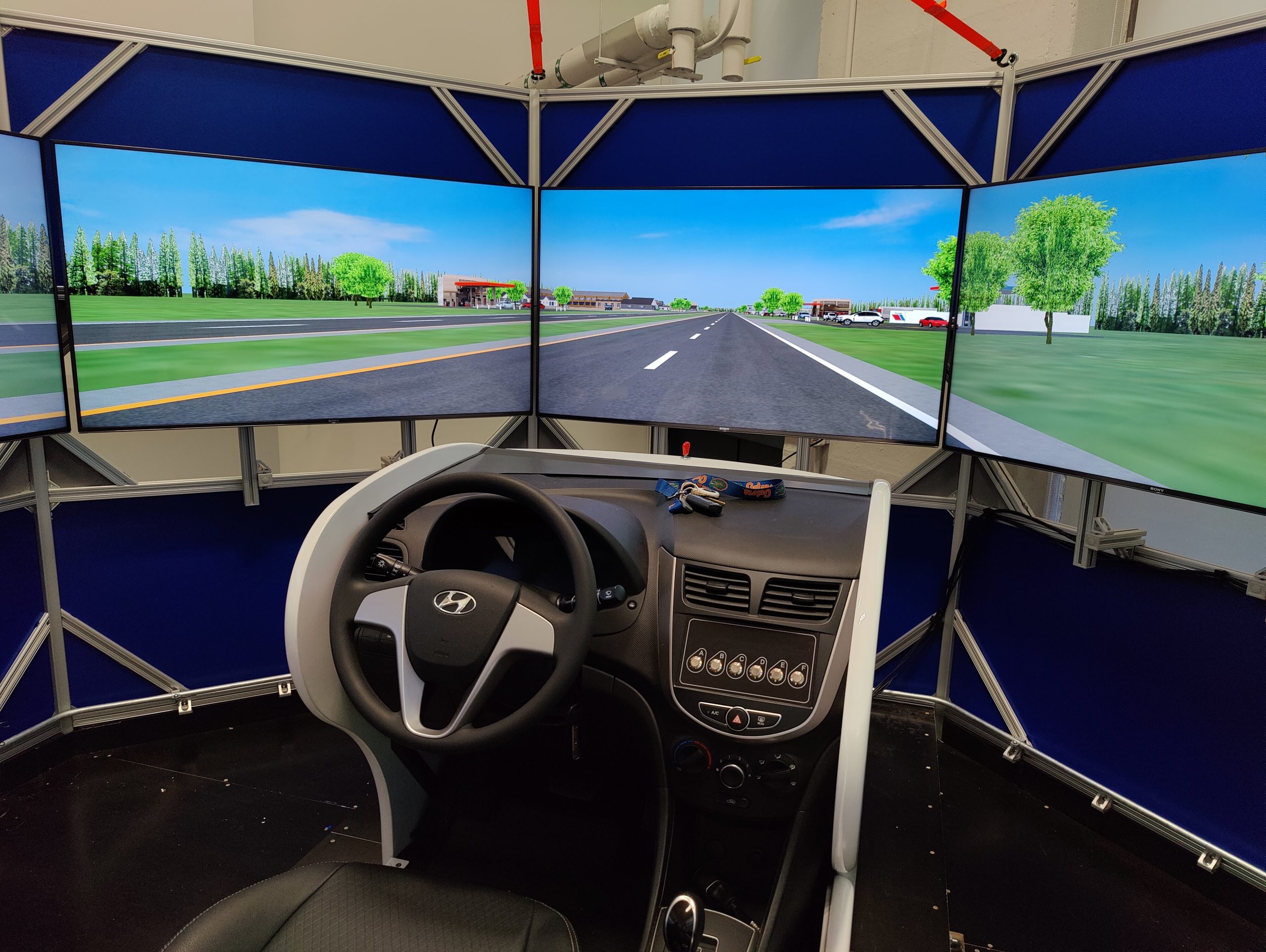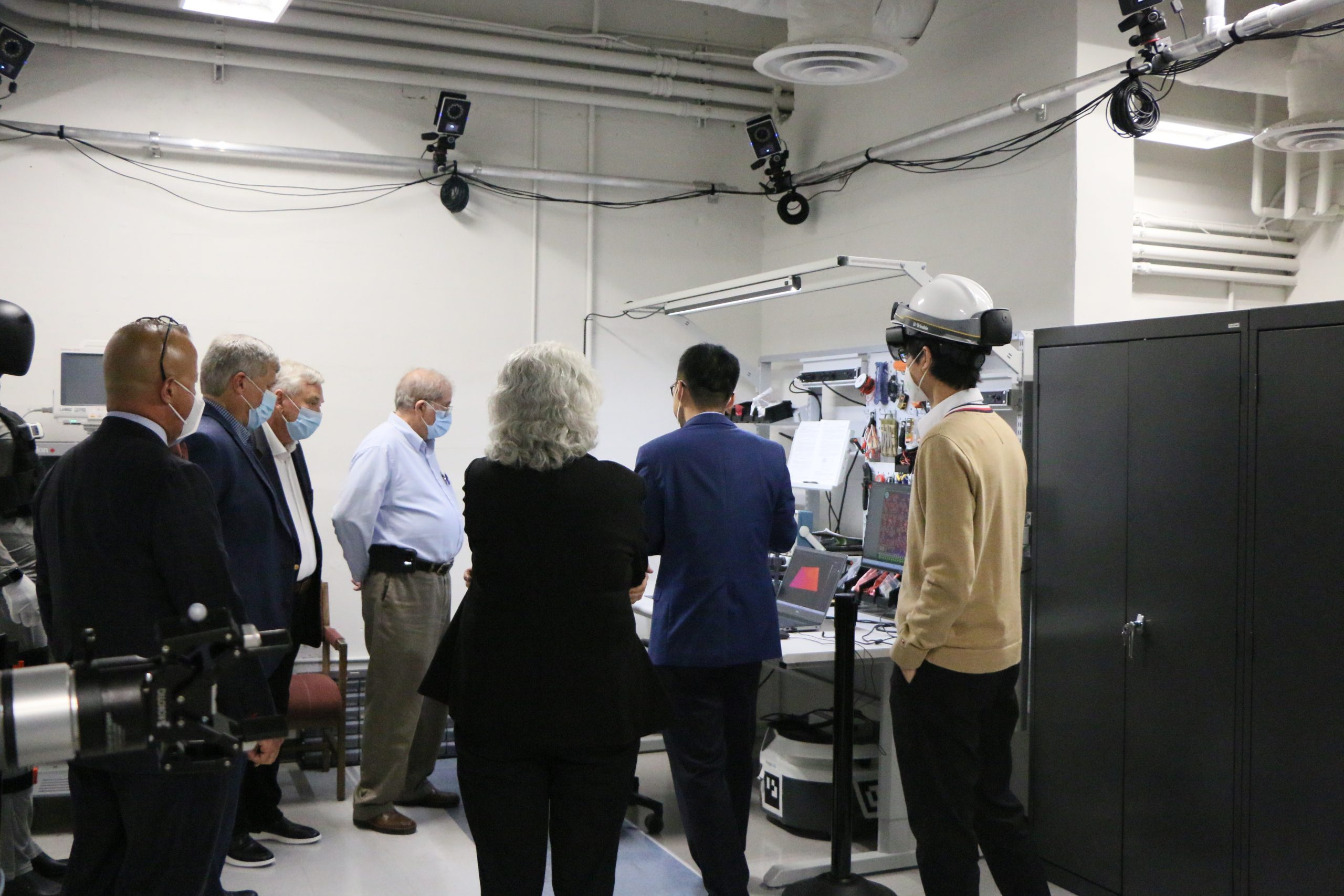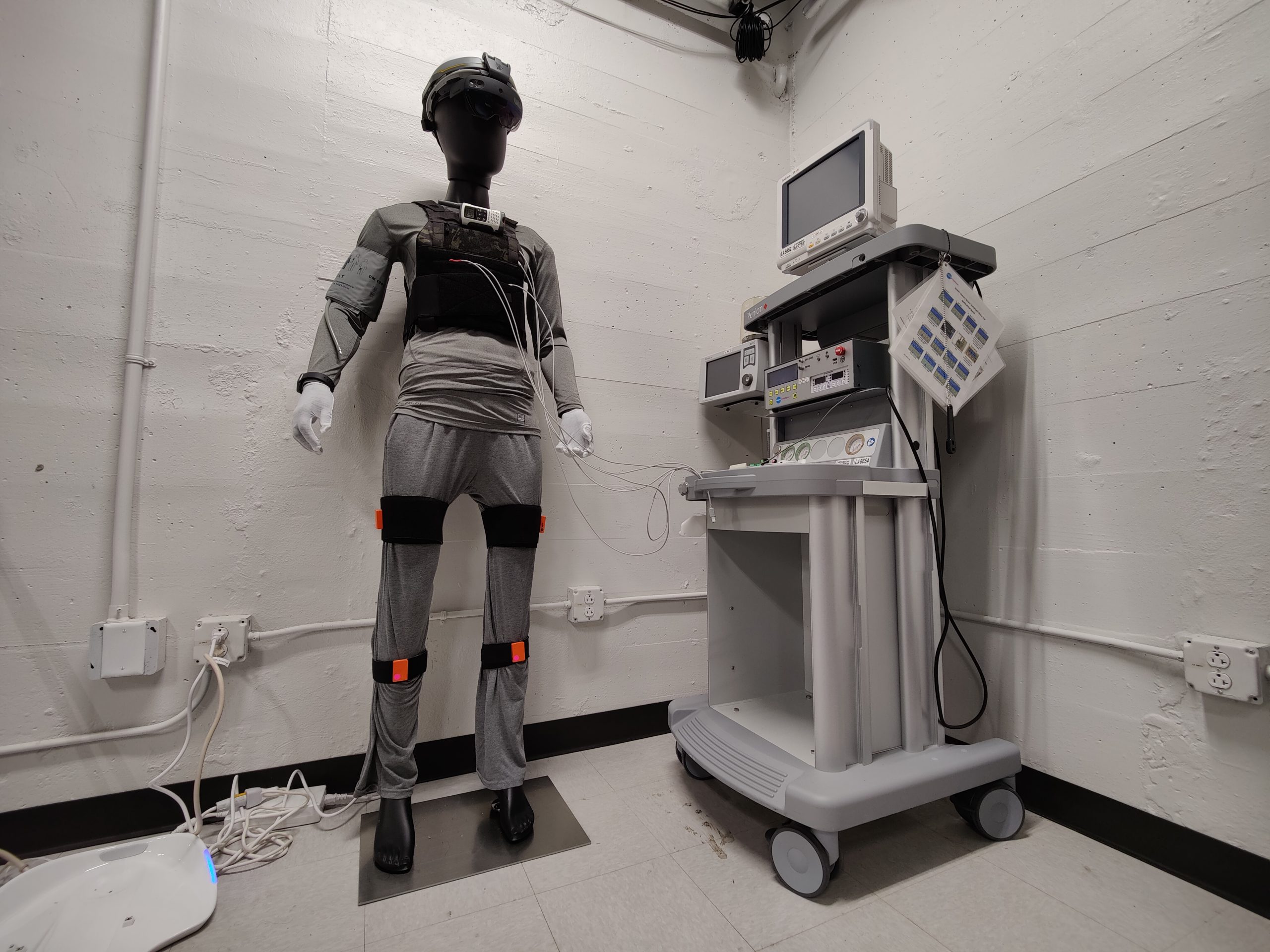- Transportation Human Factors and Human-Autonomous Vehicle Interaction
This research direction focuses on improving road safety for drivers and vulnerable road users in a wide variety of contexts including roadway design, smart infrastructure and messaging, distracted driving, and human-autonomous vehicle interaction. Our research in this direction makes use of driving simulator studies, computation models for predicting driver performance, and survey studies. Some examples of projects include the development of datasets of how human drivers negotiate novel grade-separated interchange designs for urban environments and the study of on-road and in-vehicle messaging displays for non-safety critical displays. The overarching goal of this work is to provide guidance for policymakers and automotive and technology developers to improve road safety.

- Applying Wearable Sensing Technology and Machine Learning in Occupational Injury Prevention and Rehabilitation
Our research interest in this direction is in identifying pathways that influence and improve safety and health using wearable sensors and artificial intelligence methods. Our innovative research approach utilizes a systems framework that is driven by design of wearable tools with the goal of improving human well-being and system performance. Our research study designs are both observational and experimental, based in both the laboratory and the real environment. The primary outcomes of much of our research in this direction are: 1) the prevention of worker injuries and promote occupational safety outcomes; 2) supporting patient-centric healthcare by advancing the knowledge of patients’ pre-operative education and post-operative tele-rehabilitation.

- Improving User Interactions with New and Emerging Technologies in Safety-Critical Systems
New consumer technologies (e.g., decision-aids, wearables, VR/AR, digital assistants, artificial intelligence) provide opportunities to improve user performance in complex socio-technical systems such as healthcare, disaster response, and driving. However, the interaction strategies that users choose when equipped with these new technologies is not always appropriate, especially if these technologies have not been applied to safety-critical situations in the past, leading to detrimental or unsafe behavior. The overarching goal of this work is to support effective, safe, and robust performance outcomes by helping users adopt appropriate usage strategies. We use mixed methods approaches by combining descriptive fieldwork with actual users of these new technologies, experimental studies with varied levels of complexity and control, and advanced statistical and analytical techniques. This work aims to characterize and understand interactions between individuals and their technology to improve the design, adoption, and use of new technologies.
Examples of our work along this research direction are in designing healthcare decision-aids for end patients, decision-aids and automation for emergency medical dispatching, and remote patient monitoring.
